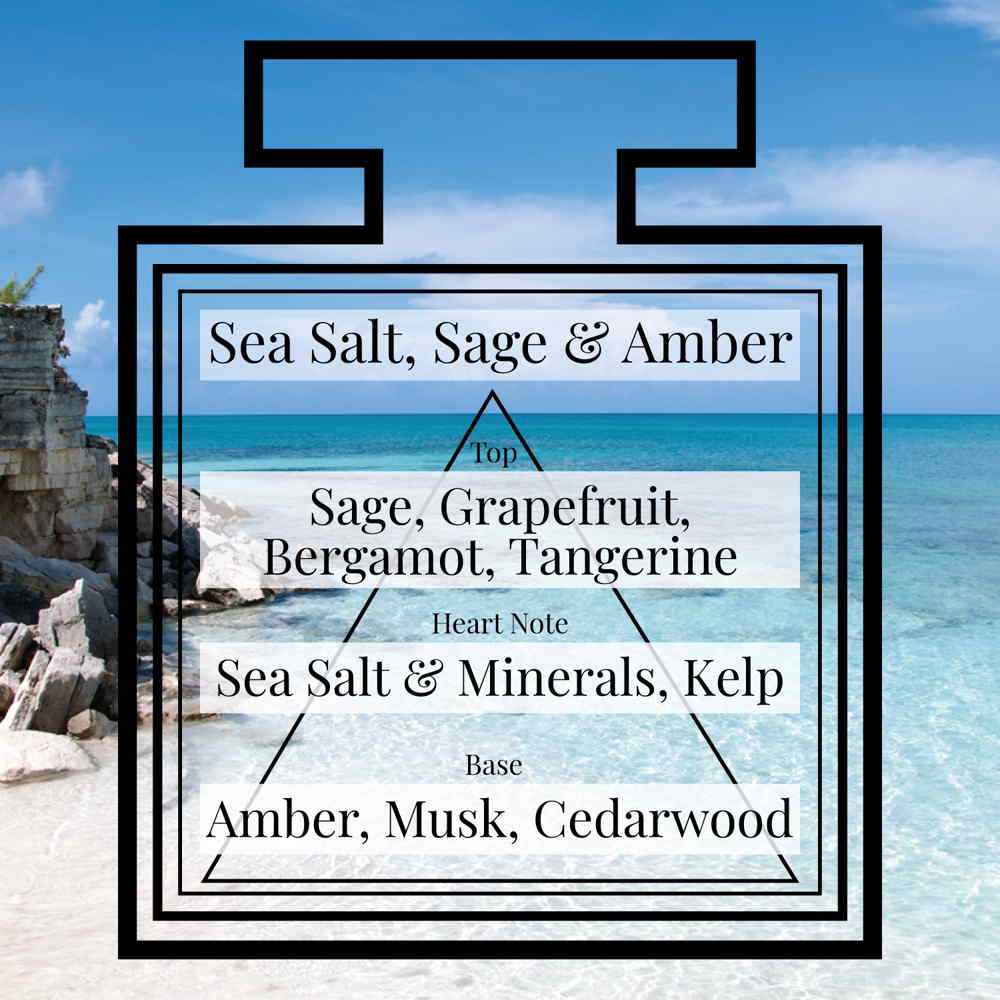Minerals in Perfume: History, Types, and Uses

Why are minerals making waves in the world of fragrance? Perfume enthusiasts often marvel at the depth and complexity of fragrances. A less talked about yet intriguing component in perfumery is minerals. Unlike common floral or citrus notes, minerals bring a distinct, earthy quality to perfumes, offering a grounding aroma both subtle and memorable. These elements add unique dimension and characteristic sophistication. Understanding the role of a mineral in perfume unlocks a new layer of appreciation, revealing how these natural elements have crafted exquisite aromas through ages. From providing a solid base note to enhancing overall profile, a mineral carries multifaceted qualities. Let us explore their historical background and indispensable place in the modern perfumer’s palette. Every compelling fragrance benefits from a solid underlying structure, often informed by the very essence of a mineral.
What Exactly are Minerals? A Scientific Perspective
In geology and mineralogy, a mineral is precisely defined: a naturally occurring, homogeneous solid with a definite chemical composition and a specific, ordered crystal structure, typically formed through inorganic geological processes. This definition usually excludes biogenic compounds. The International Mineralogical Association (IMA) is the global body naming new minerals and existing mineral species, recognising over 6,000. Each mineral possesses unique characteristics like specific gravity and measurable mineral hardness. For instance, common mineral quartz, a silicon dioxide form, has a hardness of 7 on the Mohs scale, making it very durable. A mineral’s crystal habit, its characteristic external crystal shape, is also a key identifying feature of its structure.
Organisations like the British Geological Survey (BGS) in the UK, and Geoscience Australia, are national institutes dedicated to advancing geoscientific knowledge of the Earths crust. They study various mineral deposits and mineral resources. Their work mapping these natural resources is vital. Many common minerals are silicate minerals, forming the majority of the Earths crust. Other types include oxides, sulfides, and carbonates, such as calcium carbonate found in limestone. Iron, in various forms like iron oxide or iron sulfide, is a ubiquitous mineral and essential component in many rocks and industrial mineral applications.
In perfumery, “minerals” extend beyond this strict geological definition. While some natural ingredients possess mineralic facets (like resins acquiring an earthy, stone like quality), many “mineral notes” are meticulously crafted accords. These accords blend synthetic and natural components to evoke specific mineral sensations: the crisp coolness of wet stone, the metallic tang of iron, the dry heat of sand, or the briny freshness of sea salt. This nuanced understanding allows perfumers to capture vast natural impressions, bringing the essence of the earth’s hidden treasures to life in scent. Every different mineral quality, whether real or evoked, shapes a perfume’s distinct identity.


Minerals in Our Daily Lives: Beyond Perfume
Before exploring their role in fragrance, it is important to acknowledge the pervasive impact of minerals on human life. Minerals are not only geological formations but also essential nutrients. As a dietary mineral, elements like iron, magnesium, and potassium are critical for human health, working alongside vitamins to support countless bodily functions. Iron is vital for red blood cell formation, while magnesium and potassium play key roles in muscle and nerve function. Our bodies require various chemical elements, from macro minerals to trace element amounts. A healthy diet rich in fruit, vegetables, and grains provides many essential mineral components, proving that minerals are truly fundamental natural resources. The structure of our very biology depends on these vital substances.
The World of Mineral Resources and Supply Chains
The extraction of mineral resources is a monumental global undertaking. Mineral extraction involves removing useful mineral deposits from the Earth’s crust, leading to substantial mineral production worldwide. Some minerals are classified as critical minerals due to their economic importance and supply chain risk. Rare earth elements, or simply rare earths, are prime examples of critical minerals. They are vital for high technology, from smartphones to electric vehicles. Minerals like cobalt are also critical. The journey from ore minerals to usable metals often involves complex processes in a smelter. Understanding the global critical mineral supply chain is vital for modern economies. Every different mineral type contributes to various industries, underscoring the immense value of these chemical compounds. A key mineral underpins vast technological advancements.
History of Minerals and Mineralic Accords in Perfumery
Minerals and materials with distinct mineralic qualities have a storied history in perfumes, dating back thousands of years. Ancient civilisations, such as the Egyptians and Mesopotamians, first incorporated these natural elements into their aromatic creations. They understood the intrinsic value materials with mineralic facets carried, not only for their aromas but for their symbolic and therapeutic qualities.
These early cultures used materials with mineralic characteristics in religious ceremonies, anointing oils, and even as expression. Frankincense, a tree sap resin, is one example of a material with a distinct mineralic facet used extensively in ancient perfumes. It played a prominent role in spiritual rituals, symbolising purity and divinity. This historical usage paved the way for ingredients with mineralic characteristics to be recognised as essential fragrance components.
As time progressed, the allure of mineral inspired notes continued to captivate perfumers. They experimented with types to create nuanced, layered fragrances. With advancements in extraction techniques and sophisticated synthetic molecules, harnessing the essence and evocative qualities of minerals improved significantly, allowing for bolder, more expressive perfumes. This blend of history and innovation highlights the versatile appeal of minerals and mineralic accords, solidifying their place in modern perfumery, where the very structure of a scent can evoke the strength of rock or the gleam of metal.


Types of Minerals and Mineralic Accords Used in Perfumes
Minerals and mineralic accords appear in various forms, each bringing unique characteristics and benefits to fragrance. Here are commonly used elements contributing mineralic qualities to perfumes, demonstrating the diverse uses of a distinct mineral note:
Amber: A common base note with a warm, honeyed aroma, often possessing a dry, stone like warmth. In perfumery, “amber” refers to a resinous accord, not the fossilised gemstone mineral, but evokes deep, earthy richness. It provides longevity and depth, giving a perfume its solid structure.
Orris Root: Known for its powdery, floral scent, extracted from Iris roots. Its aroma is sweet and earthy, often with a cool, almost metallic nuance, lending sophisticated texture. This is a crucial element for a delicate mineral touch.
Benzoin: This resin offers a vanilla like aroma, adding a mellow, rich dimension. It can have a subtle crystallised, almost sugary mineral quality in its dry down, providing a unique aspect to any mineral rich composition.
Frankincense: An age old resin used for woody, spicy notes, delivering warmth and mystery. It carries a distinctive cool, ethereal mineralic note, reminiscent of ancient stone cathedrals. This complex mineral note adds profound depth.
Myrrh: Known for its smoky, slightly medicinal aroma, used for complex, deep undertones. Myrrh offers a dry, dusty, sometimes salty mineralic facet that grounds other notes. Its presence ensures a robust mineral foundation.
Sandalwood: While botanically a wood, its essence can be deeply mineralic, providing a creamy, soft, warm foundation with a slightly exotic edge. It contributes significant longevity and a velvety texture, sometimes with a hint of dry earth, making it a versatile mineral component.
Vetiver: A grass root essence offering a distinctively earthy, smoky, sometimes leathery aroma with mineralic facets, providing excellent grounding and fixative qualities that evoke damp soil or stone. This is a powerful mineral earth note.
Flint Accord: A synthetic creation mimicking the sharp, metallic, slightly smoky aroma of striking flint. It imparts a dry, cool, crisp mineral note. The sensation of a spark from flint is purely mineral.
Salt/Marine Accords: Not a “mineral” in the solid sense, these accords (using ingredients like ambroxan) replicate sea salt on skin or ozonic ocean air, bringing bracing, mineralic freshness. These capture the essence of a dissolved mineral.
Each element contributes uniquely, enhancing a perfume’s structure significantly. By selecting types based on desired effect, perfumers craft captivating, harmonious aromas. These components support primary fragrances, complementing and enhancing them, making any composition richer and more intriguing with its core mineral presence.
The Olfactory Impact of Minerals: Beyond the Earthy Note
While often described as “earthy,” the olfactory impact of minerals and mineralic accords in perfumery is far more nuanced and complex. They offer a spectrum of sensations beyond a simple grounding aroma, demonstrating the versatile nature of a mineral in scent.
Texture and Feel: Minerals imbue fragrance with texture. Orris root provides a powdery, velvety feel; some resins give a smooth, polished sensation. Flint accords add a crisp, abrasive texture, enhancing tactile impression. This textural dimension adds to the overall perfume experience, a subtle but vital aspect of its structure.
Depth and Resonance: Minerals excel at adding depth and resonance. They are responsible for a scent’s lingering impression, allowing it to evolve beautifully on skin for hours. This is true for base notes like amber and myrrh, creating a profound, enveloping aura rooted in a mineral like depth.
Subtle Complexity: Unlike dominant floral or fruity notes, minerals work subtly in the background, enhancing and intertwining with other ingredients. They introduce unexpected facets: a hint of smokiness, saltiness, a cool, airy quality, or a metallic gleam of iron, adding sophistication without overpowering. The complexity of a trace element of mineral can be profound.
Bridging Notes: Minerals frequently bridge different olfactive families. Their versatile nature harmonises disparate notes, creating a seamless, well blended fragrance. A mineralic note can connect bright citrus top notes with rich woody base notes, ensuring a smooth transition and cohesive scent profile. Every good fragrance relies on this fundamental structure.


Uses of Minerals in Perfumes
Minerals and mineralic accords have carved a niche in enhancing and creating unique fragrances. They bring natural complexity and depth sought after in perfume. Their uses range from cherished base notes to defining elements. These components significantly contribute to a fragrance’s longevity and intensity, anchoring lighter notes. A key mineral provides this essential anchoring.
Let us consider ways minerals enhance perfumes:
Base Enhancement: Materials like amber and myrrh form a fragrance’s backbone, providing warm, earthy undertones that help aroma linger. They act as excellent fixatives, ensuring scent longevity, much like a rock’s enduring hardness.
Texture Addition: Orris root adds powdery quality, offering rich texture and softness to floral bouquets, creating elegance and comfort. Flint accords introduce a sharp, gritty texture, giving the impression of a rugged mineral.
Unique Aromatic Character: Benzoin’s vanilla aura enriches with a smooth, sweet quality for comforting aromas, while frankincense introduces spiritual, contemplative dimension with its cool, incenselike minerality. The distinct character of a specific mineral truly shines.
Layering Effect: Minerals enable layered compositions, where each note plays its part in creating a harmonious blend, yet maintains individual charm. They provide a subtle backdrop for other notes to sparkle, forming a compelling structural foundation.
Enhancing Longevity: Due to their often heavier molecular structure and fixative properties, mineralic notes are invaluable for increasing perfume staying power. They evaporate slowly, ensuring fragrance endures for hours, allowing full development. This inherent hardness of character translates to lasting power.
Adding Complexity and Sophistication: Minerals prevent a fragrance from being one dimensional. They introduce subtle nuances that unfold over time, making scent more intriguing and sophisticated. This appeals to those who appreciate perfume with character and depth, where every mineral note contributes richness.
Popular perfume compositions feature these mineral elements and accords, providing an earthy appeal both evocative and enveloping.
Extraction Methods for Mineral Essence and Accords
The artistry of perfumery lies in how essences with mineralic qualities are extracted or how mineralic accords are created. The process profoundly affects aroma intensity and purity. Traditionally, distillation and solvent extraction are methods for natural resins and roots, each yielding distinctive results. For true mineralic accords, sophisticated perfumery techniques are employed.
Distillation: Generally used for resins like frankincense and myrrh, distillation heats raw material to release aroma through steam. This captures pure essence, resulting in a concentrated, vibrant, clean, and sharp fragrance. The essential oil is prized for aromatic fidelity and often carries a distinct cool or dry mineral facet, reflecting the original chemical composition of the plant resin.
Solvent Extraction: Suitable for materials like orris root and many resins. Volatile solvents draw out subtler notes and heavier compounds. The resulting extract (resinoid for resins, concrete then absolute for others) is delicate but alluring, capturing a fuller spectrum of the raw material’s scent profile, including earthy or powdery mineralic nuances. This method is effective for heat sensitive materials, preserving the subtle structure of fragrance molecules.
Accords Creation: For notes not from a natural mineral or inherently mineralic material (e.g., flint, metallic, wet stone), perfumers meticulously blend aromatic chemicals to construct a “mineralic accord.” This requires deep understanding of raw materials and interactions to convincingly mimic the desired scent, creating an impression rather than direct extraction. This creative process allows development of new minerals in scent, even if not true mineral species geologically.
These processes profoundly influence final fragrance character, dictating richness, complexity, and how it unfolds. Choosing the right method is crucial for perfume integrity and achieving the desired olfactive profile, bringing the full depth of a potential mineral note to the final composition.


The Ethical and Sustainable Sourcing of Minerals and Mineralic Ingredients
Consumers increasingly care about product origins, making ethical, sustainable sourcing of perfumery ingredients, including those with mineralic characteristics, paramount. Reputable perfumeries ensure essences are obtained responsibly.
Responsible Harvesting: For natural resins like frankincense and myrrh, this means working with communities practising sustainable harvesting, ensuring tree health and harvester livelihoods. Over harvesting depletes natural resources, so careful management is essential. This is a critical aspect ensuring stable supply of valuable raw materials with unique mineral qualities.
Fair Trade Practices: Supporting fair trade ensures people involved in sourcing these precious materials receive fair compensation and work in safe conditions. This promotes economic stability in remote regions where key mineral resources might be found.
Traceability: Modern perfumers strive for greater supply chain traceability, knowing ingredient origin and production. This transparency builds consumer trust and ensures adherence to ethical standards, from initial mineral extraction to finished product.
Commitment to responsible sourcing benefits environment and communities, elevating perceived value and quality of finished fragrance, aligning with discerning customers seeking authentic, conscientiously produced mineral inspired scents. This reflects a broader commitment to sustainable mineral production.
Iconic Perfumes Featuring Minerals and Mineralic Notes
Several iconic perfumes owe their unique aura to minerals and sophisticated mineralic accords. A renowned fragrance might boast myrrh notes, endowing it with a mysterious, smoky appeal, reminiscent of ancient rituals. Another could highlight benzoin’s vanilla like essence, creating an instant classic, sweet and sophisticated. The hardness of its character often comes from its mineral heart.
Classic Chypre fragrances often feature oakmoss, which, though a lichen, contributes a distinctively earthy, damp, mineralic quality, providing a sophisticated, enduring base. Similarly, woody oriental perfumes rely heavily on sandalwood or vetiver for their rich, grounding, multifaceted mineralic backbone. Contemporary fragrances frequently employ flint, metallic, or wet stone accords to create unique, avant garde compositions evoking urban landscapes or natural elements. These could include subtle hints of iron or magnesium. These are not merely notes; they are foundational elements defining character and longevity of beloved scents, providing the underlying structure that makes them memorable.
Such perfumes demonstrate how minerals and mineralic interpretations elevate fragrance from ordinary to extraordinary. Their contribution extends beyond aroma; they introduce narrative, a story unfolding with each wear. By adding depth, richness, and unique olfactory signature, these elements secure their spot in repertoire of iconic creations, making them unforgettable. Every mineral touch enhances the story.


Mineral Heart Notes with Pairfum London
Sea Salt, Sage & Amber – Eau de Parfum by Pairfum London
A wonderfully fresh, sophisticated fragrance where Sage & Grapefruit are enriched by hints of fresh Bergamot and Tangerine top notes. The invigorating heart is enlivened with nuances of Seaweed, a fresh Sea breeze, Sea Salt and Kelp, all of which becomes smooth with a soft base of Musk, Amber and Cedarwood.
Embrace the Unique Aura of Minerals in Your Fragrance Collection
Incorporating minerals and mineralic notes into your fragrance collection transforms aroma experience. These elements bring an age old tradition of elegance and sophistication, weaving a tale with every whiff. The complexity minerals introduce adds character and longevity, leaving a memorable impression. The very structure of your perfume wardrobe can be enhanced by this addition.
If keen on exploring unique fragrances, look for those infused with minerals or boasting mineralic accords. They surprise and delight, offering a captivating experience echoing natural beauty. For personal indulgence or gifting, mineral inspired fragrances provide an unmatched aromatic journey filled with intrigue and allure, truly a key mineral for your collection. Discover how natural depth of minerals and their evocative counterparts add richness and longevity to your fragrance wardrobe. From warm, earthy foundations to delicate powdery finishes, and even crisp, metallic touches of iron, these elements offer refined complexity you can truly feel. The essential mineral quality of these scents creates a unique olfactory experience.
